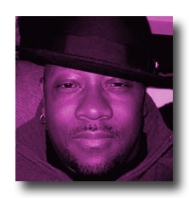 In the wake of Amiri Baraka passing, we’ve been speaking with a number of people about his life and legacy.. One of the people closest to him was legendary poet, educator and author Sonia Sanchez. She’s the author of over 20 books including Sonia Sanchez is the Homecoming, We a BaddDDD People, Love Poems, I’ve Been a Woman, A Sound Investment and Other Stories, Homegirls and Handgrenades and most recently Morning Haiku.
In the wake of Amiri Baraka passing, we’ve been speaking with a number of people about his life and legacy.. One of the people closest to him was legendary poet, educator and author Sonia Sanchez. She’s the author of over 20 books including Sonia Sanchez is the Homecoming, We a BaddDDD People, Love Poems, I’ve Been a Woman, A Sound Investment and Other Stories, Homegirls and Handgrenades and most recently Morning Haiku.
She is also the Poet laureate of Philadelphia and was in the process of working on a book with Amiri about the Black Arts Movement which was due out in May of 2014..
That book will be completed and of course dedicated to Amiri… During our interview Sonia opened up and talked about her friendship with Amiri, recounting the funny way in which the two met.. She explained that as a college student she attended a show where Baraka was performing.. At that time his name was Leroy Jones. As she walked by, Baraka called her out and demanded she submit a poem to an anthology he was doing. She said she thought he was kidding and paid him no mind..
She returned to the theater for another show a few days later and this time Baraka called her out again and ribbed her for not wanting to be in his book.. This time she took his words seriously, left the venue and returned home.. She typed up some poems and got them to him and that was the start of their life long friendship…
Sonia gave us lots of gems to chew on about Amiri Baraka. She talked about the beginnings of the Black Arts Movement and how they functioned. She underscored how they continuously supported one another and collaborated. She explained how Baraka was accessible to the community no matter how busy or traveled he was..He had great love for the people and was a genius, she noted.
She said his intellect and sharpness is often downplayed or taken for granted and it shouldn’t be when you consider all that he accomplished..
Below is our Hard Knock Radio interview with Sonia Sanchez
http://www.audiomack.com/song/hard-knock-radio/poet-author-sonia-sanchez-speaks-on-amiri-baraka
Sonia Sanchez is a force on to herself and also a treasure to our community.. We wanted to share with you a conversation we had several years ago when she talked about the Black Arts Movement and its relationship to Hip Hop
http://www.youtube.com/watch?v=JtRffMdbB0Y


 This is part 2 of an article we penned called
This is part 2 of an article we penned called 

 Gil Scott-Heron is often called the Godfather to Rap. It was a title he shunned, stating he preferred to be known as a bluesologist. Nevertheless, Heron was a towering figure whose signature song Revolution Will Not be Televised was redone by too many Hip Hop artists to name. Cuts like
Gil Scott-Heron is often called the Godfather to Rap. It was a title he shunned, stating he preferred to be known as a bluesologist. Nevertheless, Heron was a towering figure whose signature song Revolution Will Not be Televised was redone by too many Hip Hop artists to name. Cuts like  The Watts Prophets have not only been heralded as important figures in the emergence of West Coast rap, but in 1970 they released an album called ‘Rappin’ Black in a White World’. Many consider that to be the first to use the word ‘Rap’ to describe a recording that featured rhyming, This groundbreaking album proceeds ‘Rapper’s Delight‘ by almost 10 years. They also featured a woman vocalist named Dee Dee McNeil who isn’t often named when speaking of the Watts prophets
The Watts Prophets have not only been heralded as important figures in the emergence of West Coast rap, but in 1970 they released an album called ‘Rappin’ Black in a White World’. Many consider that to be the first to use the word ‘Rap’ to describe a recording that featured rhyming, This groundbreaking album proceeds ‘Rapper’s Delight‘ by almost 10 years. They also featured a woman vocalist named Dee Dee McNeil who isn’t often named when speaking of the Watts prophets